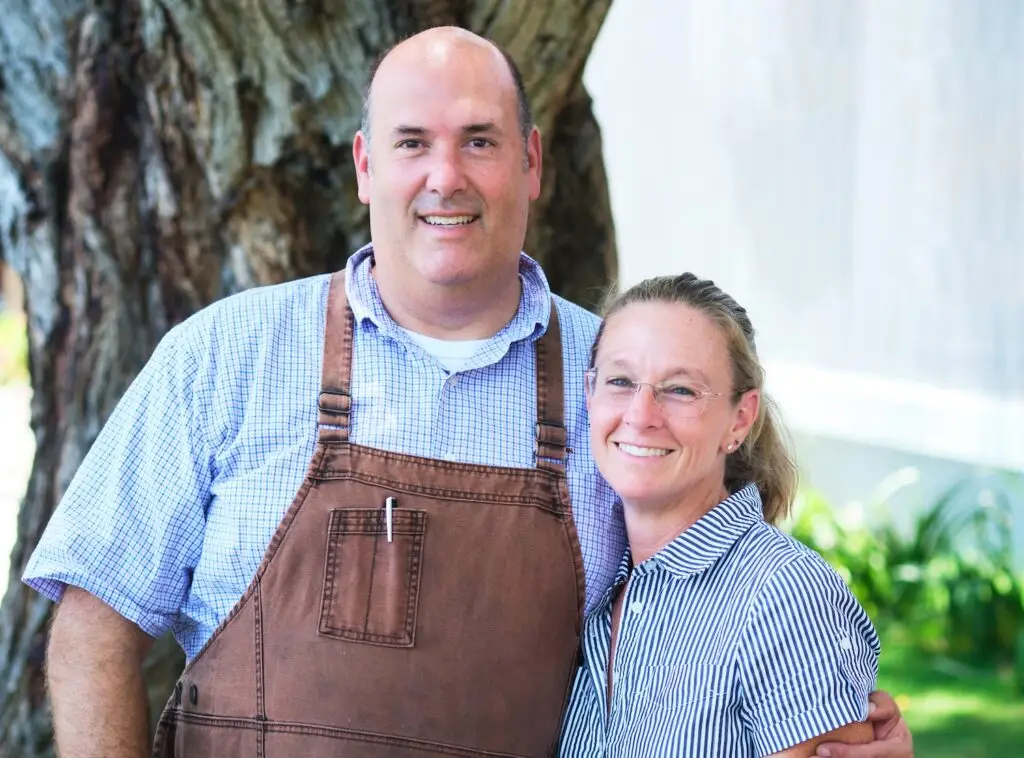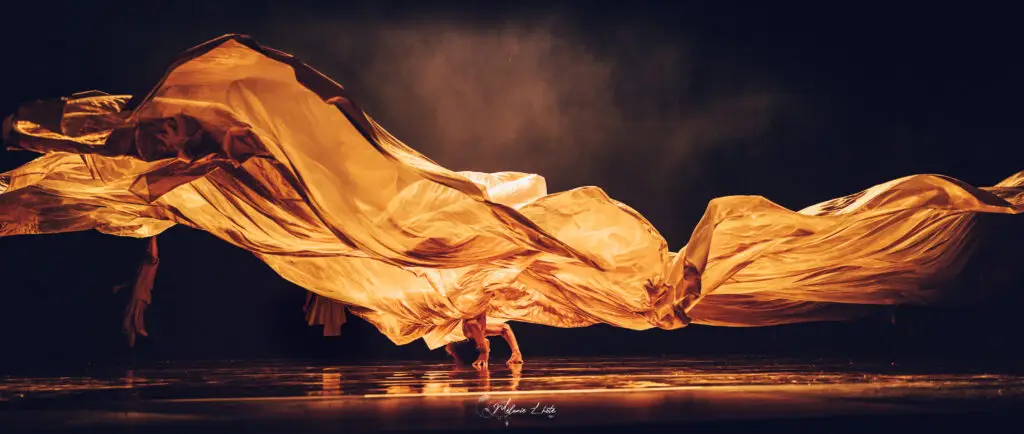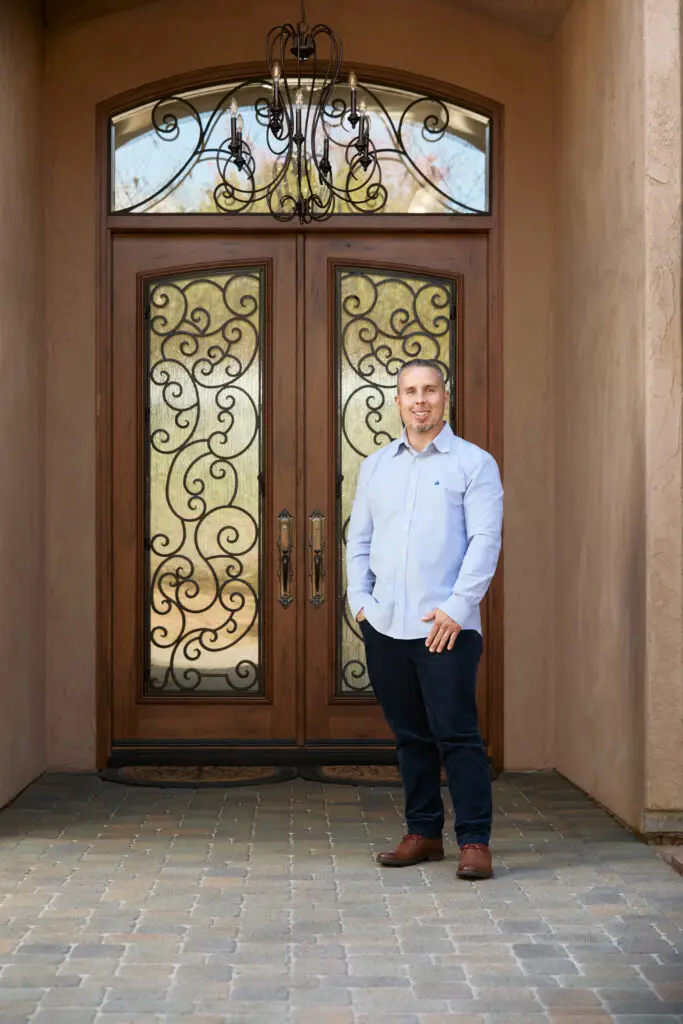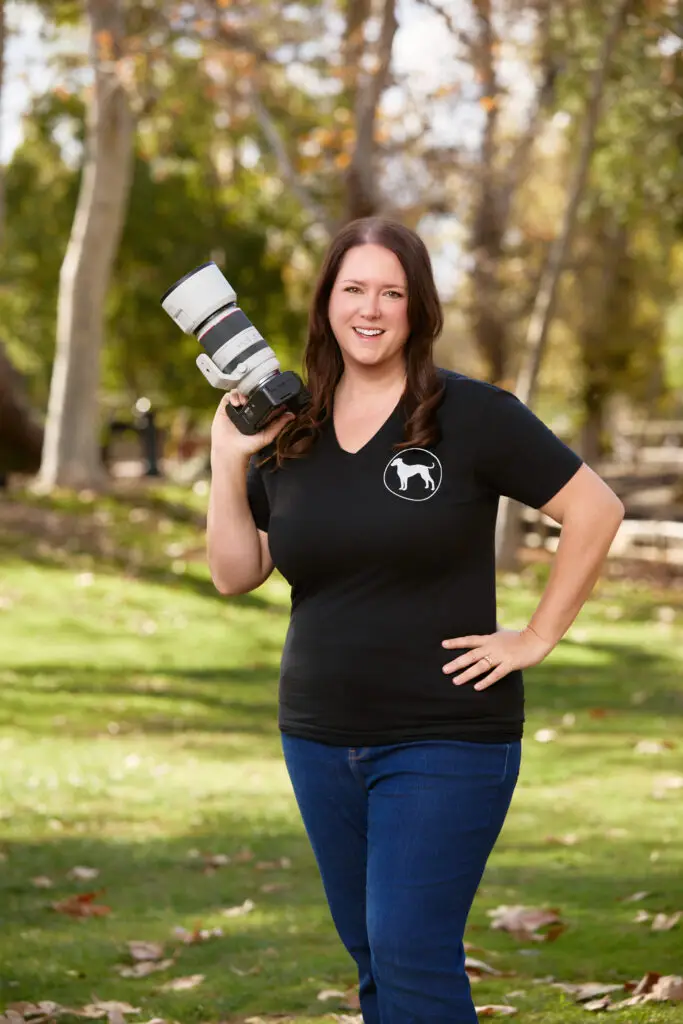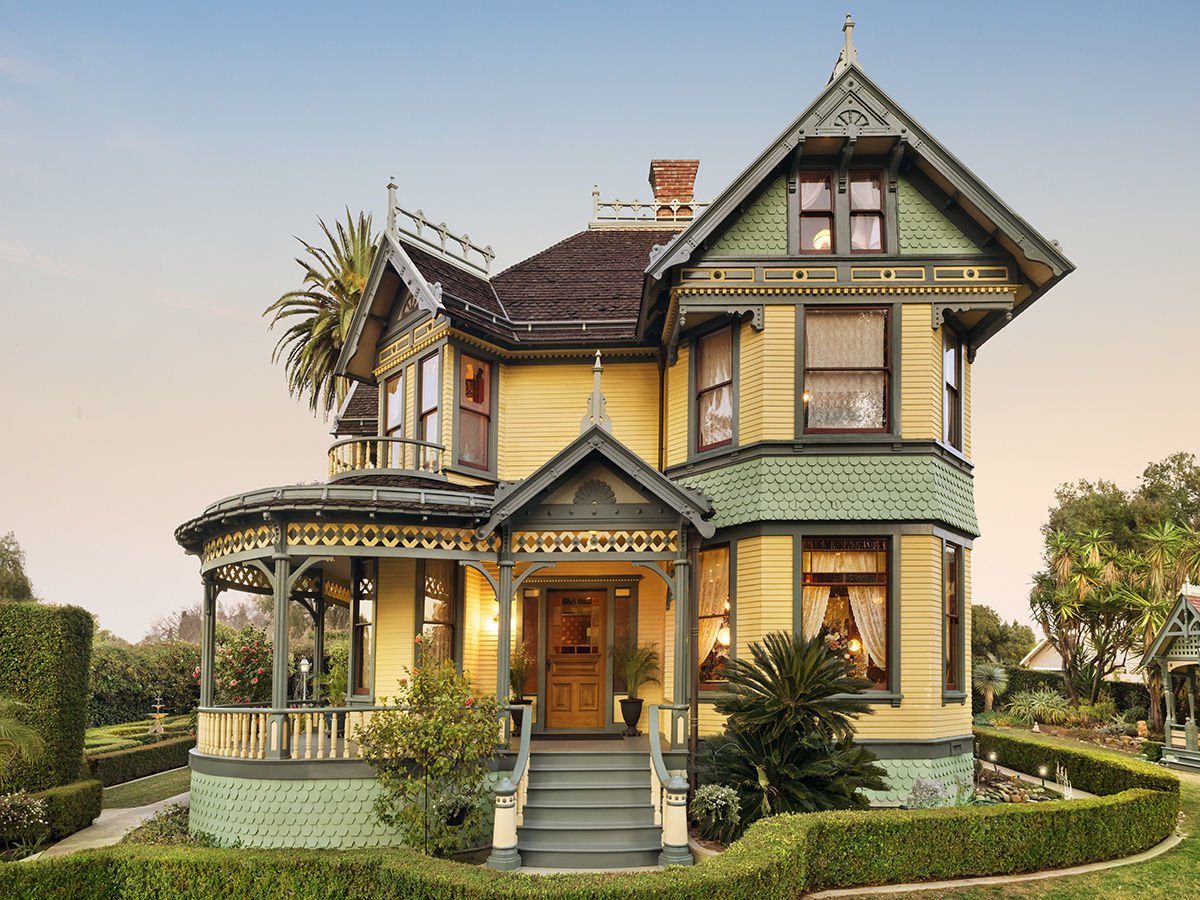The architectural styles of our houses are just as varied as the neighborhoods they inhabit, from the flat, neat grid of North Park to the hilly hidden landscapes of Rancho Santa Fe. San Diego is home to a mix of influences and tastes, and the climate only adds to our options, making indoor-outdoor living possible. Here, we’ve compiled the six architectural styles most common in San Diego County.
A word on that: There are styles and substyles and variations and blends. One home could be 50/50 Spanish and Mission, or 80/20. Another might’ve been designed in a transitional period between two styles. There are anachronistic homages and poor imitations. There are renovations that aren’t accurate or authentic. And there is no end to the debates: “Victorian is an era, not a style”; “Arts & Crafts was a movement and ‘Craftsman’ a misnomer.”
Mainly, what we’ve portrayed here are the homes built in the era we describe, not built recently in the fashion of an earlier style. We tried to give a strong example of a particular style (most homes have a predominant one). We did not get too technical or academic, but we did discover that there’s a whole world out there for architecture geeks. Most of what we’ve shown are homes that were built in a time when craftsmanship was the only option, and the woodworker took a lot of pride in their job.
In our grandparents’ day, The Home Depot was not just around the corner and buildings weren’t yet mass produced. Owners could maybe afford to build what the architect planned, flourishes and extra towers and all; and the goal was a beautiful landmark, not a feat of highest-square-footage-for-lowest-cost.
The illustrations show what you see when you’re walking your dog in Mission Hills. It’s what you see in your head when you imagine your dream home. (Someday, right?) Or if you’re lucky enough, it’s what you see when you come home every day, with the dog barking in the yard and your kids playing in the gazebo. Home, sweet San Diegan home.
Choose A Style
Victorian || Craftsman || Spanish || Midcentury Modern || Ranch || Mediterranean
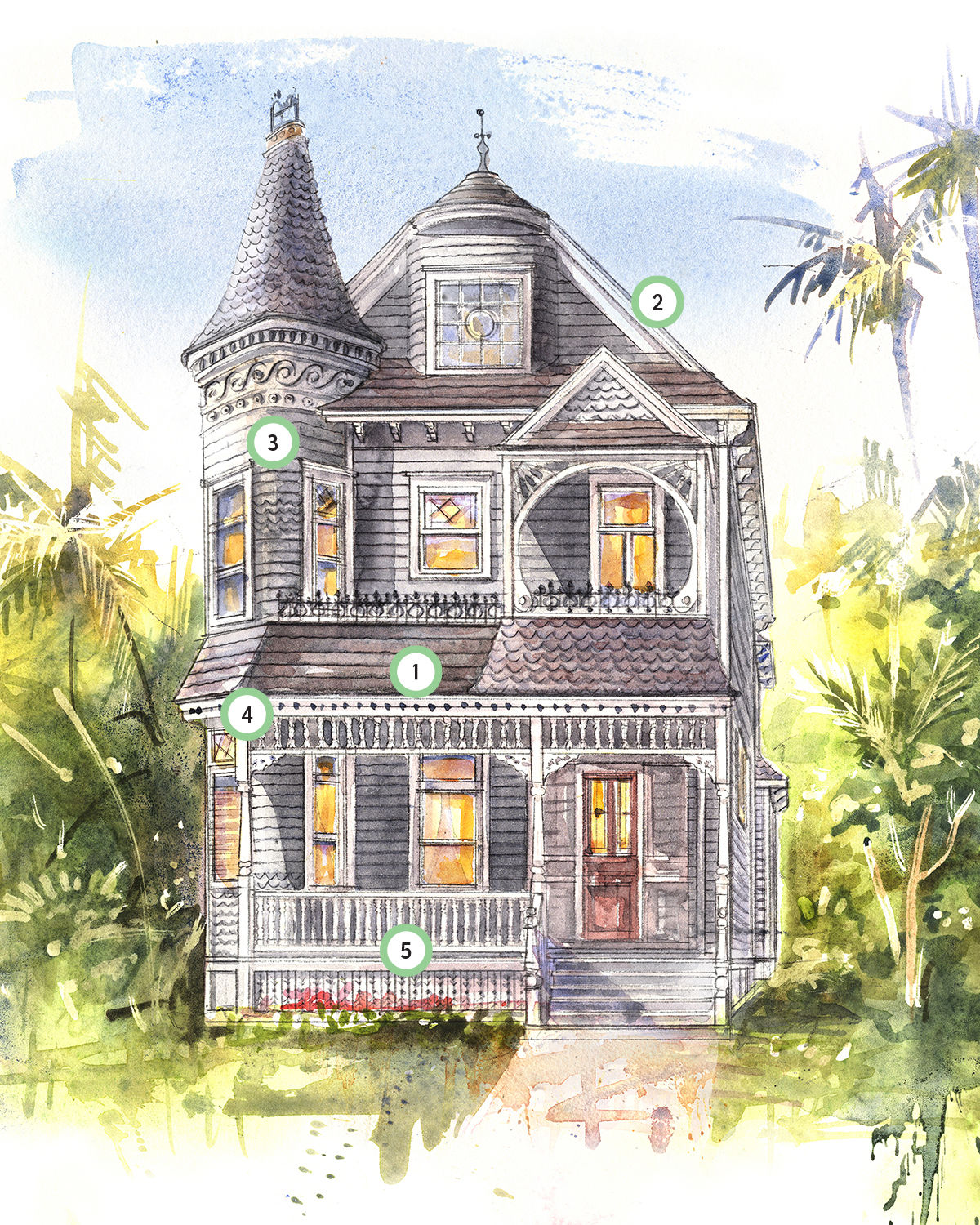
Illustration by Maksim Koloskov
Victorian
In terms of inventory, Victorian homes make up about 15 percent of the housing stock built before World War II. And of all the styles most commonly found in San Diego County, Victorian is the oldest. Though Queen Victoria’s reign began in 1837, San Diego homes in this style were erected after 1860 and even into the early 1900s. Experts have defined substyles—Queen Anne (see this month’s cover), Stick, Shingle, Folk, and more—but most often, people just say “Victorian.”
“I like the romanticism of this style,” says David Marshall, president of Heritage Architecture & Planning, a firm that is currently restoring parts of Hotel del Coronado. “They’re like little castles. And one of the characteristics of Victorians is they’re very quirky. They’re asymmetrical—there’s a tower on one side and a porch on the other. They have surprises around every corner.
“Working on the Del, it’s hard to not love Victorian because it’s such a rare style these days. People don’t build Victorians anymore. So every Victorian you see is 100-plus years old.”
You’ll see the most Victorians in areas like Golden Hill, Sherman Heights, National City, Coronado, and Bankers Hill, although many of those have been turned into offices. They don’t go on the market often, so your best bet is to purchase a fixer-upper in an area like Sherman Heights or National City.
Even having to restore it should be cheaper than buying something new, and thanks to the Mills Act, property taxes on a registered landmark home are up to 70 percent lower—you just have to assume the responsibility of upkeep. Marshall warns that wooden facades require more painting than stucco houses, and there’s also the possibility of termites and dry rot. “That’s why stucco became more popular. It’s a lot lower maintenance. People who like Victorian style have to understand that it takes hard work to get them looking good, or stay looking good.”
Not everyone is a fan of the style. “I don’t have people beating down my door for a Victorian,” says Elizabeth Courtiér, a historic and architectural specialist at Willis Allen Real Estate, “but it depends where you are. There are parts of San Francisco where that’s the absolute top style people are looking for.” Still, a well-crafted historic home leaves an impression. “There are huge positives to those houses,” she says, remembering an 1886 Cortez Hill stunner she sold. “There was a lot of space, great high ceilings, and a four-sided fireplace—it had one chimney and there were fireplaces in four different downstairs rooms.”
Jorge Ozorno, assistant professor at NewSchool of Architecture & Design adds: “I like the Victorian houses today in the same way that we love our grandmothers. We respect them, but we may not like their dresses. But we love them a lot, so we have to keep them; we have to make a huge effort in conservation because that is our remote past.”
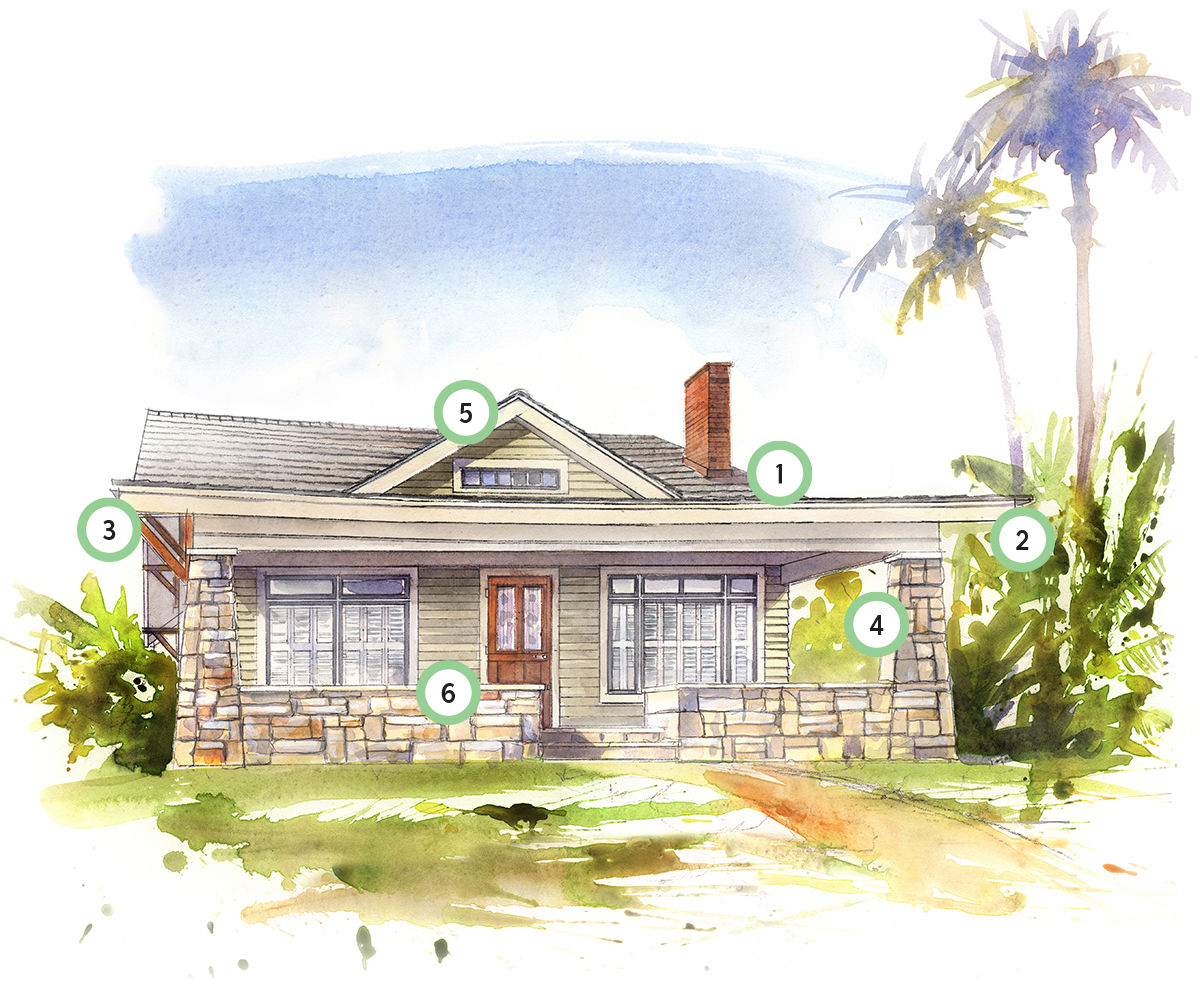
Illustration by Maksim Koloskov
Craftsman
When most people hear “Craftsman,” they think of the cute little bungalows dotting the streets of North Park. From about 1905 to 1930, Craftsman was the most popular style for a smaller home, although a Craftsman can be quite big. And while a “bungalow” could be a small one-story home of any style, a “California bungalow” usually refers to a Craftsman. That’s likely because the Craftsman-style bungalow was born in Pasadena.
The style was influenced by the British Arts & Crafts movement, which put an emphasis back on workmanship in reaction to England’s industrialization. The American Arts & Crafts movement followed suit, spreading in part thanks to Gustav Stickley’s magazine, The Craftsman.
The best neighborhoods to find them in are North Park, University Heights, Normal Heights, and Hillcrest. Woodwork and elaborate interiors are a trademark of this style. “For a lot of people, the Craftsman is cozy,” says Courtiér. “Craftsmans tend to have smaller room sizes and a lot of rooms. It’s not traditionally an open plan, but it’s comforting to some people. It’s a really interesting [glimpse], psychologically, of where people are from, literally and figuratively. It’s how it makes them feel. Maybe it reminds them of their grandparents’ house that was a really happy place for them.” Courtiér warns that some homes have been so thoroughly remodeled to their last owner’s taste that the architectural or stylistic integrity is gone. But if the bones are still there, if it’s been restored, you can feel the magic. Courtiér herself lives in a 1910 Prairie house (a contemporary style to Craftsman—see page 85) in Point Loma. “That’s what is so interesting about architecture—you can’t just look at pictures, you have to be inside it to feel the space, the light, all of it. It makes you feel different.”
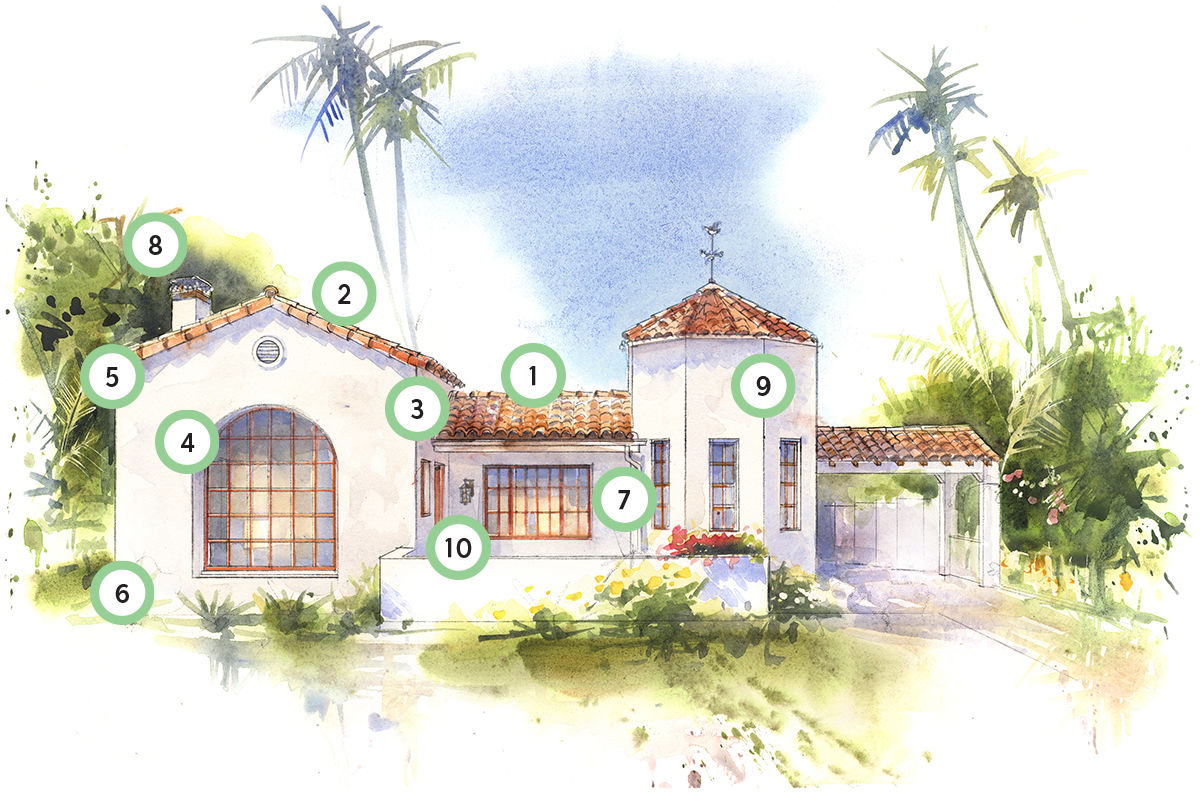
Illustration by Maksim Koloskov
Spanish
In 1915, San Diegans who visited the Panama-California Exposition in Balboa Park might have been living in a Victorian or Craftsman home. But the Balboa Park buildings, many erected just in time for the event, made Spanish Colonial Revival the style du jour. In this case, the credit goes to exposition designer Bertram Grosvenor Goodhue.
A few other factors helped this style take off. Because photographs could not yet be mass produced at the time, young architects traveled to Europe to study buildings and sketch ideas. World War I diverted many of these architects to Spain, which was still at peace—and provided new design inspiration.
Different terms are often applied to this look, so let’s set the record straight. “Spanish Colonial” means pre-1900. Imagine thick adobe or stone walls and small windows with no glass, just bars or wooden slats. “Mission” is simple with smooth stucco but has the shaped parapet (think of that wall with the curved top, as seen on the Mission San Diego). It can have a flat roof. And what we commonly see around town is Spanish Colonial Revival, or Spanish Revival (the Balboa Park buildings are particularly ornate and decorated examples).
“I really love the expressiveness of the buildings,” says Marshall, whose firm, Heritage Architecture & Planning, does a lot of work in Balboa Park. “Spanish style has a lot of flourishes and ornamentation.”
What we’ve shown here are examples of Spanish Revival, built between 1915 and 1940. The characteristics of this style are compatible with San Diego living because our climate is similar to Spain’s and Mexico’s, making courtyards and arcades, balconies, fountains, and cool tiles ideal.
Finally, “Spanish Eclectic” is a mix of styles. But when clients talk to their real estate agents, they usually say, “I’m looking for a Spanish.”
The best places to find Spanish Revival are Point Loma, Loma Portal, Kensington, Presidio Park, Mission Hills, and in Rancho Santa Fe, where famed architect Lilian Rice designed many buildings.
Rancho Santa Fe Realty’s Holly Manion grew up in a 1928 Lilian Rice that her parents owned for 43 years; now she lives next door.
“My sister and I have been in the business in RSF for over 40 years,” she says. “I think we have sold almost every older home at least once. Although many clients ask for the ‘old-style Spanish’ like those designed by Lilian Rice, they really want them all fixed up with the newer kitchens, newer bathrooms, and bigger bedrooms.”
Still, it’s the character that draws homebuyers to the style.
“People love the romantic charm of the built-in niches, arched doorways, hand-painted tiles, tile roofs, and enclosed courtyards.”
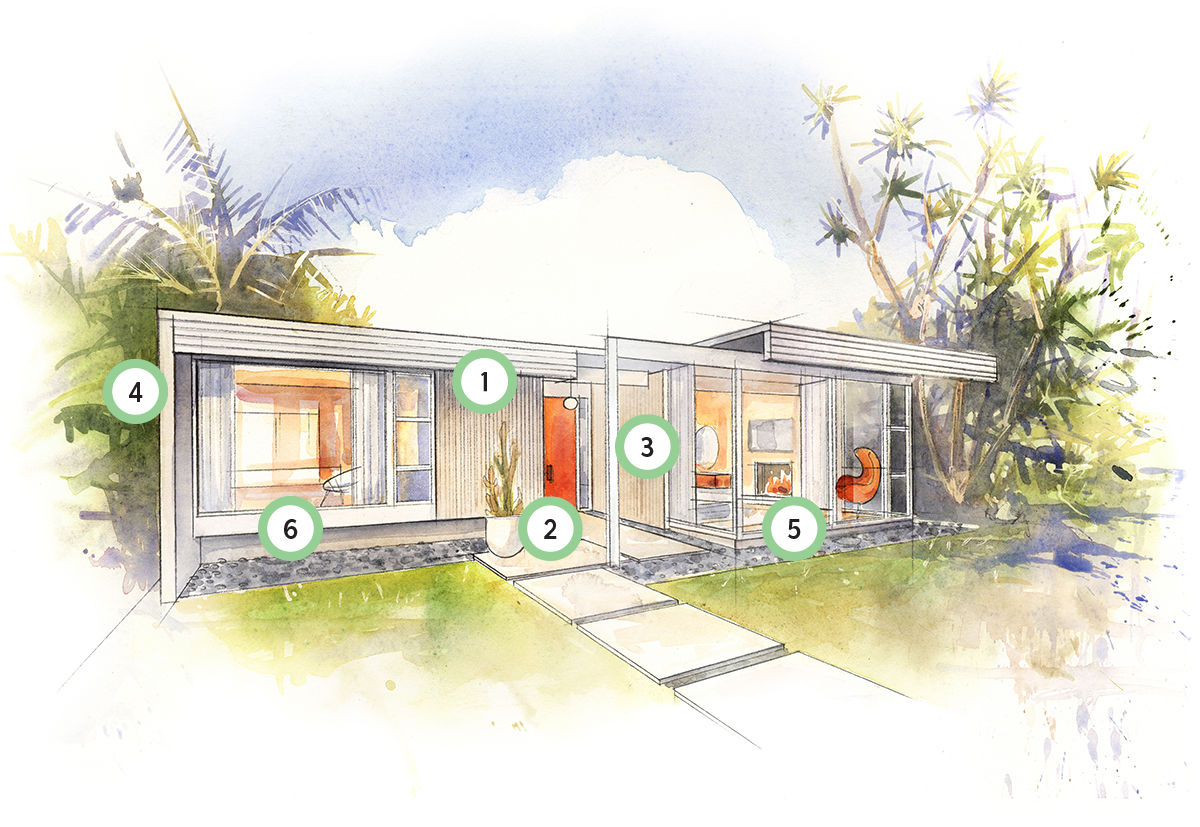
Illustration by Maksim Koloskov
Midcentury Modern
It may surprise some that “modern” really means anything built after 1900. Postwar modern, or midcentury modern (“MCM”) houses were built between 1945 and 1965.
“Midcentury modern is hugely popular because it’s more open, more glass, more indoor-outdoor,” says Courtiér. “People definitely want indoor-outdoor, which is a totally different functionality than how a lot of the older homes were built.”
In homes of this era and style, you’ll find glass walls or columns instead of a solid wall. You might hear the term “post and beam,” which is a substyle where load-bearing beams are supported by columns. MCM homes could be built on hills and sloping lots that had previously been ignored, and they could be more than one story.
For MCM, look in La Jolla, Bankers Hill, Mission Hills, Point Loma, Del Cerro, and on Mt. Helix.
Realtor and founder of the website Modern San Diego Keith York is not just a fan—he believes modern architecture enhances a person’s lifestyle and well-being. He lives in a custom home by Frank Lloyd Wright apprentice Sim Bruce Richards, and he’s enthusiastic about the positive effects of inhabiting a “glass and wood pavilion.”
“A home that’s open to its surroundings [and] leverages our temperate climate, bathes the spaces in natural light, or even disappears into its landscape brings a delight to everyday tasks like household chores or working from the home office. The ability to engage with the outdoor space from the inside—and vice versa—becomes crucial to reaching modernist ideals.”
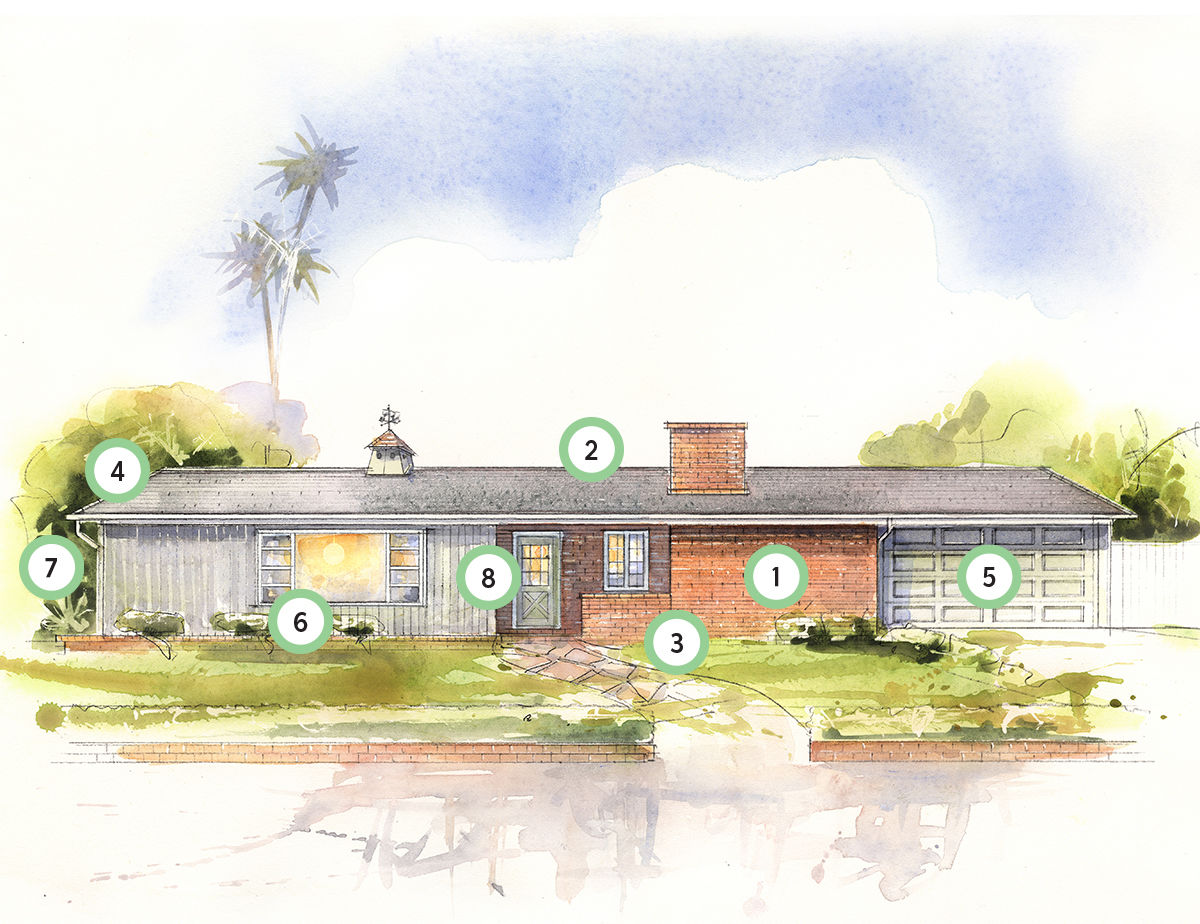
Illustration by Maksim Koloskov
Ranch
When you think of a ranch, you might think of a homestead in the Old West—like a farm, but with wild brush instead of green pastures. However, although the ranch architecture style originated here, it’s not exclusive to the west. It really just means a building that’s wide and low to the ground. Size is key: Ranch houses became popular after the invention of the automobile. Before that, houses were built closer together, within walking distance of town or the nearest trolley stop. Cars made it possible for development to sprawl, for lots to be wider and the homes on them to be broader—especially with a garage attached.
From the outside, the look can vary greatly. Their wall cladding can be brick, stone, stucco, or even a wood pattern called board and batten. The material might change at the base of the window; there might be shutters, window-box planters, or wrought-iron details.
To view San Diego’s oldest prewar ranches, visit Presidio Park, Mission Hills, and La Jolla.
For postwar ranch style, consider all the housing developments throughout Mira Mesa, Allied Gardens, Clairemont, and Pacific Beach. “Unfortunately, the quality of construction dropped in the postwar years because they were building so many, and trying to build affordable houses, so they were cutting corners,” Marshall explains. A ranch may have no insulation; it may also have single-glaze aluminum windows (feel the draft!).
While popular from the 1930s to the 1970s, the style fell out of favor beginning in the 1980s. As land prices increased, it became all about the two-story.

Illustration by Maksim Koloskov
Mediterranean
“Mediterranean” is a wonderful catch-all for homes with a blend of styles, built from the 1970s to the present. Anything that’s relatively new and looks Spanish, Italian, Californian, or a little bit of all three, that’s Mediterranean. Are you living in a tract home in Carmel Valley? You’re probably in a Mediterranean.
Admittedly, the style doesn’t get a lot of respect among historians. They think of Mediterranean as a more generic Spanish Revival. But it’s a sign of the times—an individually designed home is just too costly to build these days. Developers construct large numbers of Mediterraneans at a time, and at a bigger scale than their historical inspiration. A traditional Spanish might look perfect at 1,200 square feet, but it’s another thing altogether when you triple the size to create a McMediterranean.
“Most people want a home that feels cozy and has a Craftsman or Romantic feel to it,” says Marshall. “So modern houses are not as common as a borrowed style from a previous period. That’s why Mediterranean is so popular. It fits our climate. It’s also cheaper to build and maintain with stucco.” Don’t want maintenance? Easy, breezy Mediterranean it is.
Five More Styles to Know
Tudor
(1890–1940)
Features include a steeply pitched roof, front-facing gable, half timbering, and groupings of thin windows and multiple panes. Most popular in Del Mar, because of the Stratford Inn, and La Jolla.

Classic San Diego – Prarie
Prairie
(1900–1920)
Architect Frank Lloyd Wright is the big name behind this style, named after the Prairie School. Look for these homes (with clusters of windows, deep overhangs, and an emphasis on the horizontal) in Bankers Hill, Mission Hills, and La Jolla, although Prairie only constitutes about two percent of the county’s homes built before 1940. This 1908 in University Heights just sold for $1.9 million.
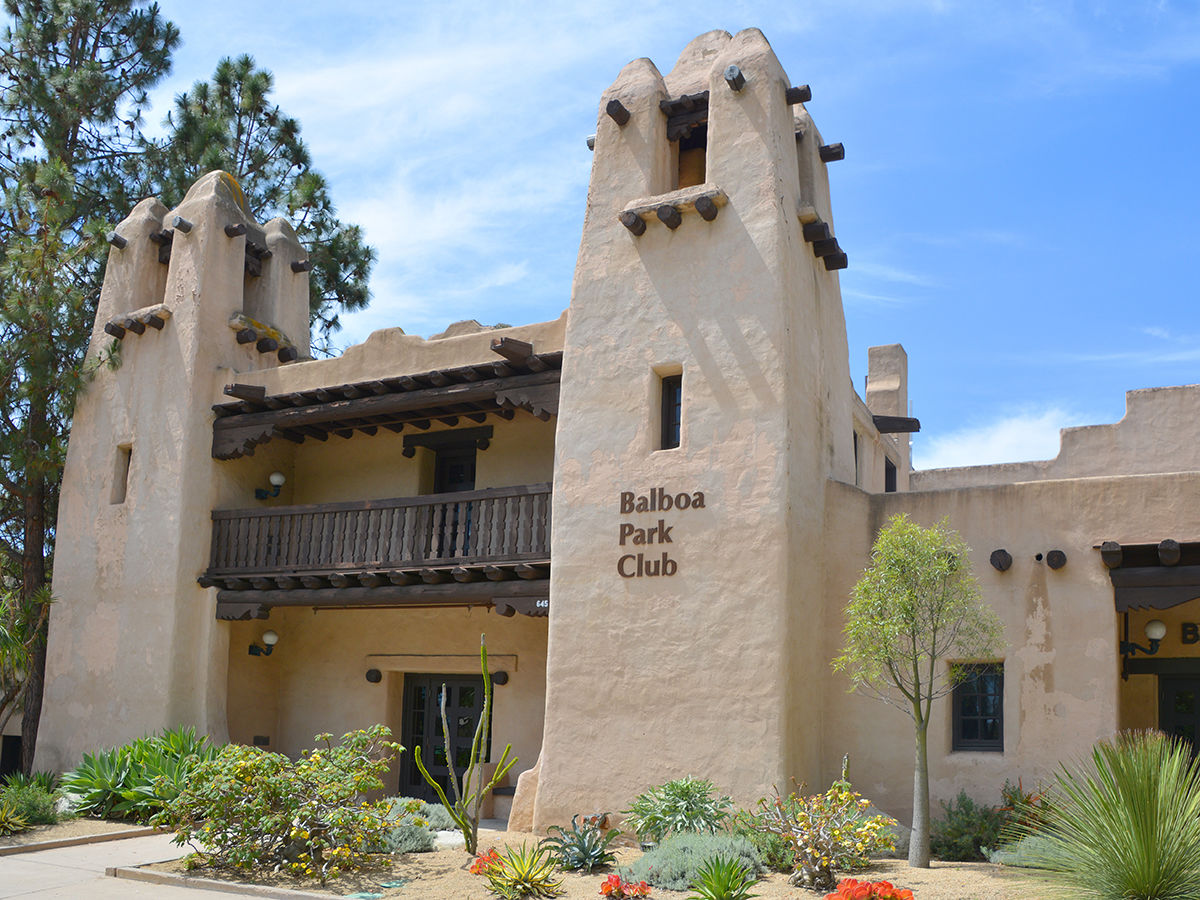
Classic San Diego – Pueblo
Pueblo
(1910–present)
A flat roof, earthy colors, and projecting wooden beams characterize this style. The Balboa Park Club building is a good example. Pueblo makes up just one to two percent of the pre-1940 housing stock, so start your search in La Jolla and Mission Hills.
Vernacular
(1930–present)
“Vernacular” is a blanket term for a building made with whatever materials were available, often with no architect involvement. “They were utilitarian and usually very plain and simple,” Marshall explains. “Just something that keeps rain off their head.”
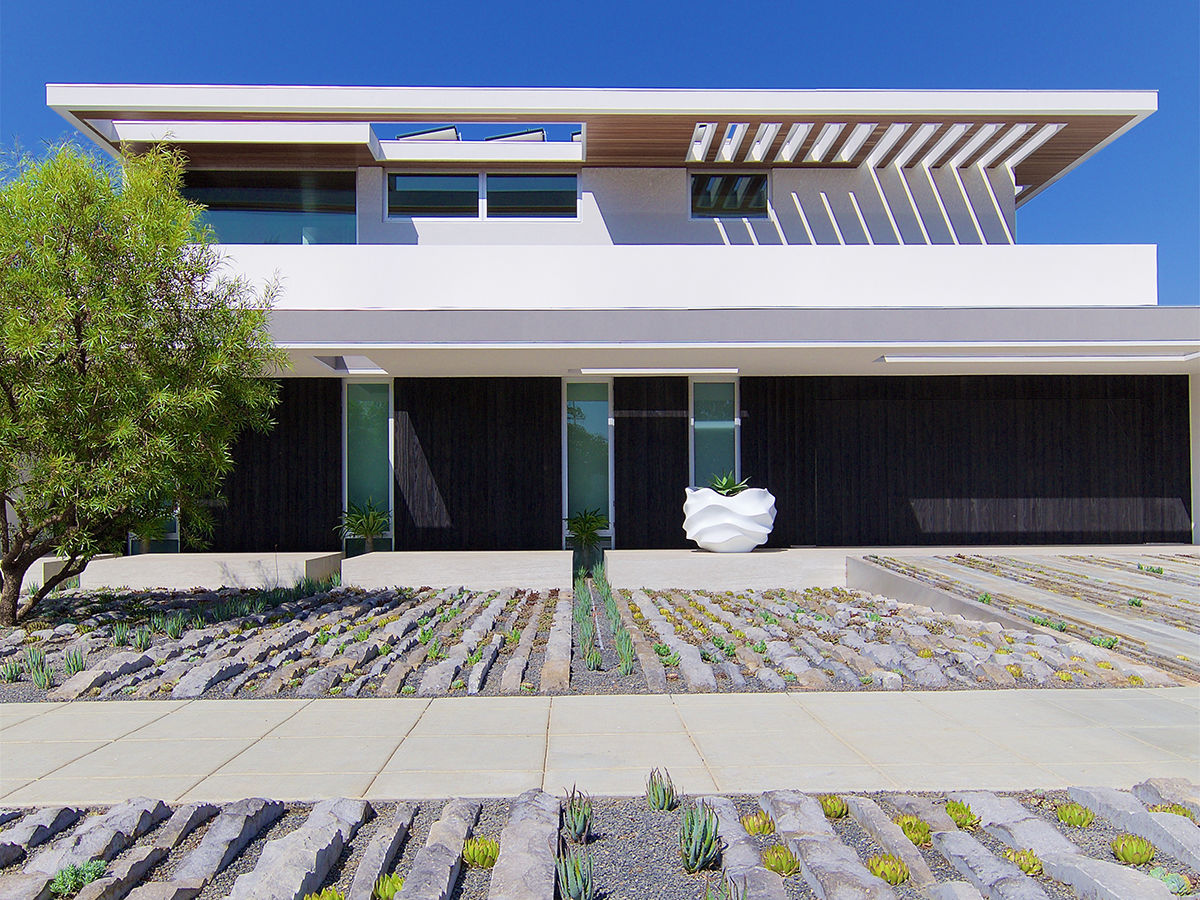
Classic San Diego – Contemporary
Gisela Borghi
Contemporary
PARTNER CONTENT
It’s closest to modern, but “contemporary” means “current.” Check out the Martin Crossman-design house above, and high-rises downtown—you’ll often see glass curtain walls, cantilevered balconies, and no peaked roof. “They don’t really have a top, middle, and base,” says Marshall. “They’re continuous. It keeps construction costs down. Once you’ve done one floor, all the rest are the same.”
